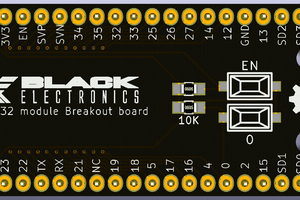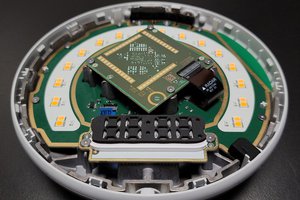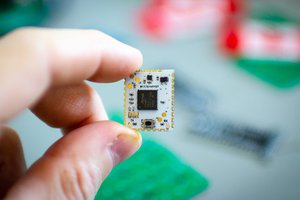Femto Module v1
Highly miniaturized RP2040 12x12mm PCB module
Highly miniaturized RP2040 12x12mm PCB module
To make the experience fit your profile, pick a username and tell us what interests you.
We found and based on your interests.
Photos.zipx-zip-compressed - 22.74 MB - 08/18/2022 at 22:40 | | |
Femto_Altium_source_files.zipx-zip-compressed - 10.89 MB - 08/18/2022 at 22:39 | | |
Femto_Kicad_source_files.zipx-zip-compressed - 4.68 MB - 08/18/2022 at 22:39 | | |
Femto_Manufacturing_Files.zipx-zip-compressed - 159.01 kB - 08/18/2022 at 22:39 | |
Create an account to leave a comment. Already have an account? Log In.
Interesting choice to use a separate pcb as leads of a package, but do you think you could get it smaller? Another addition could be the module footprint exposing a grounded E-pad to heatsink the RP2040 from its package to the host PCB.
Edit: This would mean not cutting out the center, but instead using thinner PCB stock material and completely enclosing the microcontroller.
or just cut a thermal pad and stick it in between the RP2040 and the exposed copper on the carrier pcb
Become a member to follow this project and never miss any updates
About Us Contact Hackaday.io Give Feedback Terms of Use Privacy Policy Hackaday API Do not sell or share my personal information

 Hemal Chevli
Hemal Chevli
 Salim Benbouziyane
Salim Benbouziyane
 txyz.info
txyz.info
 Sean Hodgins
Sean Hodgins
ale co to ułatwia? płyta główna powinna pobierac mało prądu i powinna miec choć trochę wygody. gdzie zasilanie lipo albo step-up np. od 0 do 5V wtedy możesz zasilać prawie dowolną baterią lipo 18650 itp. a nawet panelem słonecznym. np. https://1bitsquared.com/products/orangecrab ma zasilanie. I tak każde urządzenie musi być zasilane, kabel zawsze jest złym pomysłem.
nie mówię o klawiaturze, jakimś ekranie. omiatanie klawiatury np. zajmuje mnóstwo czasu i prądu i zazwyczaj nie powinien to robić główny procesor. No chyba, że chcesz to potem wstawić do jakiegoś wiekszego sprzętu ja https://beepberry.sqfmi.com/ albo https://www.lilygo.cc/products/t-deck (który ma i tak 2040 do klawiatury właśnie)